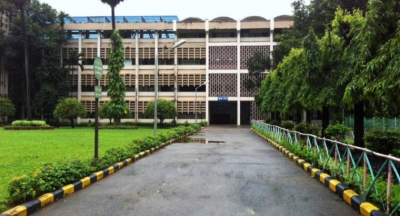The Indian Institute of Technology (IIT) Bombay has developed a technique to convert nitrogen generating plants to oxygenating units to help meet shortage of the life-saving gas for Cvoid-19 patients.
Prof. Milind Atrey, Dean (R&D), IIT Bombay, who led the project said the breakthrough has been achieved by fine-tuning the existing Nitrogen Plant setup and changing the molecular sieves from Carbon to Zeolite.
"Such nitrogen plants, which take air from the atmosphere as raw material, are available in various industrial plants across India. Therefore, each of them could potentially be converted into an oxygen generator, thus helping us tide over the current public health emergency", Atrey explained.
The pilot project, which has been tested successfully, is a collaborative effort between IIT Bombay, Tata Consulting Engineers and Spantech Engineers, Mumbai, who deal with PSA Nitrogen & Oxygen plant production.
The pilot project relies on a simple technological hack: conversion of PSA (Pressure Swing Adsorption) Nitrogen Unit to PSA Oxygen Unit!
Initial tests done at IIT Bombay have shown promising results. Oxygen production could be achieved at 3.5 atm pressure, with a purity level of 93% – 96 %. This gaseous oxygen can be utilised for COVID-related needs across existing hospitals and upcoming COVID-19 specific facilities by providing a continuous supply of oxygen.
A PSA Nitrogen plant in the Refrigeration and Cryogenics Laboratory of IIT was identified for conversion, to validate the proof of concept. To undertake this study on an urgent basis, an MoU was signed between IIT Bombay, Tata Consulting Engineers and Spantech Engineers to finalise a SOP that may be leveraged across the country.
Spantech Engineers installed the required plant components as a skid at IIT Bombay for evaluation using IIT Bombay’s infrastructure at the IITB Nitrogen facility at the Refrigeration and Cryogenics lab. This setup for the experiment was developed within three days, and the initial tests have shown promising results.




















